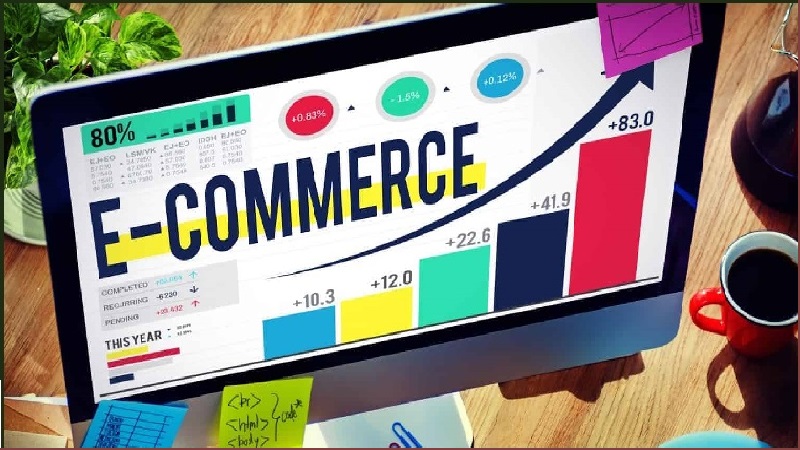 |
|||||
| Top 20 On-Line Business Ideas | |||||
| Set Up an E-Commerce Site. | |||||
| One of the best ways to earn online income is by setting up an e-commerce store.
Here’s the plus side: if you try to go the route of affiliate marketing, the best affiliate marketers are focused on three main niches; dating, weight loss, and making money online. You would have to compete with the best of the best, and it’s not easy. With the e-commerce route, in many markets, you’ll be competing against old-school business people who may or may not have any internet marketing experience. Many of them have glitchy, out-of-date websites, which leaves you a lot of room for improvement, and you can capitalize on their shortcomings. It’s still not easy by any means. It requires hard work, and you need to stand out amongst the hundreds of thousands of e-commerce websites and online stores. But by filling a unique niche and executing the right marketing techniques, you can make your e-commerce store a profitable success. Here are some tips to help you get started with your e-commerce store: • Ask yourself, “Is the product expensive?” There are costs associated with manufacturing, distribution, reselling, etc. If your product isn’t expensive (at least $50 or more), there may be no profit left by the time you sell the product. • Ask yourself, “Is the product in a growth market?” If your market has already passed its peak (i.e., the VCR market) and is on the downslope, you probably don’t want to get involved. Instead, you want to get into an industry that’s on the upswing – that’s where you’ll have the most profit and growth potential. • Consider building a Shopify store. Shopify is a system built for e-commerce. With some basic web knowledge, you can set up a good-looking store very quickly, with a low-cost investment and with no coding needed. Shopify has a 30-day free trial too, so you can get started without spending a dime. Here are some additional resources for creating a successful online store: How to Build an Online Store using WooCommerce One of the best ways to earn online income is by setting up an e-commerce store. Here’s the plus side: if you try to go the route of affiliate marketing, the best affiliate marketers are focused on 3 main niches; dating, weight loss, and making money online. You would have to compete with the best of the best, and it’s not easy. With the e-commerce route, in many markets, you’ll be competing against old-school business people who may or may not have any internet marketing experience. Many of them have glitchy, out-of-date websites, which leaves you a lot of room for improvement, and you can capitalize on their shortcomings. It’s still not easy by any means. It requires hard work, and you need to stand out amongst the hundreds of thousands of e-commerce websites and online stores. But by filling a unique niche and executing the right marketing techniques, you can make your e-commerce store a profitable success. Here are some tips to help you get started with your e-commerce store: • Find a profitable market. Brainstorm some ideas, do keyword research, and try to get as specific as possible. For example, there is probably a lot of competition for selling surfboards. But if you narrow it down to surfboard racks, you may have a better chance of standing out in the market. • Ask yourself, “Is the product expensive?” There are costs associated with manufacturing, distribution, reselling, etc. If your product isn’t expensive (at least $50 or more), there may be no profit left by the time you sell the product. • Ask yourself, “Is the product in a growth market?” If your market has already passed its peak (i.e., the VCR market) and is on the downslope, you probably don’t want to get involved. Instead, you want to get into an industry that’s on the upswing – that’s where you’ll have the most profit and growth potential. • Consider building a Shopify store. Shopify is a system built for e-commerce. With some basic web knowledge, you can set up a good-looking store very quickly, with a low-cost investment and with no coding needed. Shopify has a 30-day free trial too, so you can get started without spending a dime. Here are some additional resources for creating a successful online store: • How to Start an Online Store• How to Build an Online Store using WooCommerce SEO Mistakes of e-Commerce Websites You Must Avoid.
You may not think that search engine optimization matters on e-commerce platforms. That can pave the way for some serious mistakes that prevent the platform from being effective as possible. While the approach is a little different, SEO does play an important role in the world of online marketplaces. Here are a few examples of the SEO mistakes that must be avoided if you want your e-commerce site to reach its full potential. Using Duplicate Content Perhaps you have the same product sold under multiple sub-brands. The product can be anything from running shoes to makeup. Since they are all identical, it’s tempting to come up with one description and change nothing in the text other than the sub-brand itself. That may be the easy way out, but you end up giving the major search engines a reason to rank your pages for all those sub-brands lower. A better approach is to prepare different descriptions for each product. The unique content will rank higher and attract more customers. Lots of Content Pages With Low Performance Given that your site is all about selling products, pay closer attention to the ratio between content and products. Simply put, you may have too much content that serves no real purpose and it’s adversely affecting the performance. Weed out pages that serve little purpose and tighten the content on other pages. Combine elements of content from several lower-performing pages on your site and the blog you use to direct readers to the site. You’ll soon see them ranking higher and generating more interest from consumers. Too Much or Too Little User-Generated Content It’s a reality that reviews do help your search engine rankings. You want to make sure there is always room for one more. Don’t be overly concerned if every review does not come with a top rating and may have some negative comments. See that as an opportunity to learn what works for your customers and how their comments help improve the way you do business. Responding in a professional manner to those reviews will also attract the type of attention you want, even if some reviews are less than glowing. As to quality, moderate the reviews. Note how several prominent commerce sites allow readers to sort reviews by star rating, most helpful, and other criteria. That makes the reviews more accessible and also aids in ranking. Using Keywords Properly If you choose to pepper all your pages with keywords or keyword phrases that are close but not quite on the mark, the search engines will rank them lower. Use keywords and phrases that are directly related and add something to the descriptions of each product and you can expect higher rankings. Remember that more is not always better. Even if you have relevant keywords, repeating them too often on a single page will damage your ranking. If using the keyword one more time seems a little forced or out of place, rely on your instincts. All content should flow easily and follow a logical pattern. Too many keywords, even the right ones, will harm the flow and hurt the page rankings. Haphazard Internal Linking Does your linking from one product page to the next make sense? Are you following a plan or is the linking random? If you want to make it easier for customers to find what they want and have the pages ranking higher in search engine results, the linking must make sense and it must direct consumers to pages they want to see. Pay close attention to link depth. Consumers should get where they want to go in a couple or three clicks at best. Limit and prioritize the links on each page so the most helpful suggestions are there for the readers. Don’t overdo it by including too few links on each page. Use cross-linking between categories responsibly. If there is no obvious connection between them, don’t do it. Talk with an expert and have your e-commerce site professionally evaluated. If any of these issues exist, resolve them immediately. The site will soon be performing better than ever, both in terms of rankings and in the number of visitors to those pages. Build niche websites as an online business.Niche websites target a very specific topic. They’re a great way of earning revenue because the traffic they attract is so targeted. You can monetize by selling information products, e-commerce, or affiliate marketing. You can make it your online business’ main field of work by building and selling niche sites once they are generating high monthly traffic. E-commerce revenue in the US totaled to $431.6 billion in the year of 2021 alone – by 2025, it’s forecasted to reach $563.4 billion.⁴ Starting your own e-commerce business may seem daunting, but it’s a very profitable avenue. An e-commerce business is simply a business that only operates online, without a physical store. You could make your own product line, source products from other companies, or even sell your own services, such as business consulting. Like with any retail business, the chance to scale up and make large profits is always there. What you need to start |
|||||
Starting an e-commerce business is not the cheapest or easiest move, but one that can pay-off big time.
You’ll have to first invest a lot of time in planning.
From there you have costs such as business permits and licenses, domain hosting, payment processing, inventory management software, and shipping, among many other potential costs.
| Start your business plan for free with Wise. Attract investors and manage your payments across borders, saving you up to 19x compared to PayPal. |
|---|
Get the benefits of a Wise Business account
Business management analyst

Businesses are popping up left, right and center, and will continue to do so for the foreseeable future.
New entrepreneurs and even seasoned businesses looking to expand are always in need of external advice – especially when it comes to management.
Business management analysts analyze the current operational practices of a given business and look for solutions to improve the efficiency of it.
Between 2020-2030, the employment of business management analysts is forecasted to grow by 14% – so the job is in demand.⁵
What you need to start
Any webmaster knows that designing a website requires careful consideration – even more so for e-commerce sites. Because of the sensitive and complex nature of the site, it is important that the customer has an easy shopping experience. To achieve that goal, here are a few design principles you should incorporate. Here are some of the most important:
1. Include an FAQ page
For a customer to understand how your e-commerce site works, make sure to leave plenty of guides for them. A good place to start is an FAQ page. This page should answer specific questions, such as return policy, cash refunds, delivery time, and waiting period. By answering questions before they are asked, this helps minimise unnecessary queries from customers.
2. Set up analytics
It is crucial to set up analytics for your e-commerce website so that you can accurately monitor the overall performance of your site. You can also get a better idea of the browsing habits of your visitors, and determine which pages are being visited more frequently, and which ones aren’t. All in all, analytics goes a long way to help you to fix the weak features of your site, and ultimately reduce the visitor bounce rate.
3. Write fitting and convincing product descriptions
In order to help customers to understand, and ultimately purchase, your products, you need to write accurate and convincing descriptions for them. Start with describing the unique features and functionalities, but be careful not to go overboard or you might just end up sounding like you are bragging. Remember, most internet users have a short attention span. This means you only have a limited window of opportunity to not only spark their interest but also hold their attention.
4. Use high-quality photos
There is absolutely nothing consumers hate more than being deceived. One of the limitations of online shopping is that customers could only find out the actual quality of products once it is delivered to them. One way to help them judge if a product is suitable is to provide high-quality photos Aside from allowing customers to accurately see what the product looks like, good looking pictures can also be a great tool for grabbing their attention.
5. Make your e-commerce site easy to navigate
You can have the best products and services, but it would all be for nought if your visitors don’t even know their way around your site. A site navigation bar can assist visitors by not only by helping them find specific sections but also help them to see what other pages your site has. Other navigation tips to implement include using generic labels, avoid using drop-down menus (because they can obstruct the view of your content), and organising the items on your product list.
6. Utilise payment systems
Some customers may prefer to shop using their credit or debit card, while others like using Paypal or other gateways. To make these online transactions safe and efficient, choose a payment gateway that is supported by your e-commerce platform. Ideally, this gateway should have very few bugs or issues so that customers don’t have to deal with mistaken deductions and purchases.
7. Keep sensitive information confidential
It might seem obvious for an e-commerce site, but there is some information that should be kept private. Client information, in particular, should remain confidential. One way to ensure this data is not leaked is to have an SSL certificate, a security protocol that determines the level of encryption for the link and data transmitted. This feature works by creating an encrypted link between a server and a browser.
8. Choose the right web hosting package
Just as important as the e-commerce site’s content is your site’s web hosting package because this ultimately affects the performance of your website. With the right hosting package, you can minimise downtime – and don’t have to worry about a slow loading site putting customers off. Luckily, Crazy Domains delivers 300% faster page loading speeds using SSD across a multiple server network and comes complete with a 99% uptime guarantee.
The point of using these design tips and features is to make the shopping experience much more enjoyable for your customers. Hopefully, such tactics will also convince them to spend more time, and money, on your site.
| 💰 Bypass censorship by sharing one of these links: https://1realnews.com/20-ideas-05/ or https://box91.com/20-ideas-05/ or https://box127.com/20-ideas-05/ or https://box145.com/20-ideas-05/ or https://box154.com/20-ideas-05/ |
You can Work From Home |
||||


































